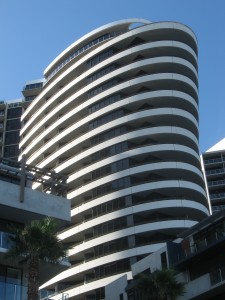Article – French language / Langue Française)
“Vraie” fibre contre “fausse” fibre : le gouvernement veut clarifier les choses |ZDNet.fr
“Real” fibre versus “fake” fibre : Government wants to set things right
My Comments
An issue that will surface with deploying fibre-based next-generation Internet service to apartment and office blocks and shopping centres is how should the Internet service be properly qualified as far as the consumers are concerned.
In France, where a lot of households are based in apartments, there is a fair bit of bickering about whether a service provider had installed a fibre-to-the-premises or a fibre-to-the-building deployment. This is especially where service providers are wanting to run that their fibre installation is “real” fibre rather than “false” fibre as part of one-upping themselves against the competition.
In a multi-occupancy development, a fibre-to-the-premises deployment has fibre-optic cabling going to each apartment, shop, office or other premises. This is compared to a fibre-to-the-basement development, also known as a fibre-to-the-building development where the fibre-optic cabling goes to the building’s telecoms closet and a copper-based cabling solution is used to bring the Internet service to each apartment or shop. The copper-based cabling solution could implement VDSL2 which uses the building’s existing telephone cabling, DOCSIS 3.1 which uses the coaxial cabling that is part of cable-TV infrastructure or Gigabit Ethernet with new Cat5 or Cat6 twisted-pair “blue” cabling.
Most consumer-driven deployments would focus on the fact that households primarily download stuff and would focus on the download speed. But there are users who place value on upload speed which is one of the advantages offered by fibre-to-the-premises. These would include people who frequently work from home or run a home-based business, along with the shops, offices and like premises used for business purposes. They would place importance on uploading so as to facilitate cloud computing, telecommunications, onilne-storage and similar business services. Similarly, the concept of a future-proof next-generation Internet deployment would be considered important as peoples’ needs evolve.
An all-fibre deployment along with a fibre-copper deployment that uses Cat5 or Cat6 Gigabit Ethernet cabling for its copper component would offer the synchronous download-upload capabilities and high speeds that business users would want.
But there needs to be a standard for qualifying whether a service provider or infrastructure provider has wired that multi-occupancy building with a fibre-to-the-premises setup or a fibre-to-the-building setup. This would include what kind of technology the copper component was based on in the latter service type and whether it is feasible to upgrade to an all-fibre installation along with extra approximate costs.
As well, there would need to be requirements concerning the kind of marketing spiel that service providers or infrastructure providers deliver to those with executive authority over the buildings and the marketing spiel delivered to potential customers who occupy these buildings.
At least the French are fleshing out this issue so that there are proper requirements regarding the marketing of next-generation broadband to apartment dwellers and shopping-centre tenants.



